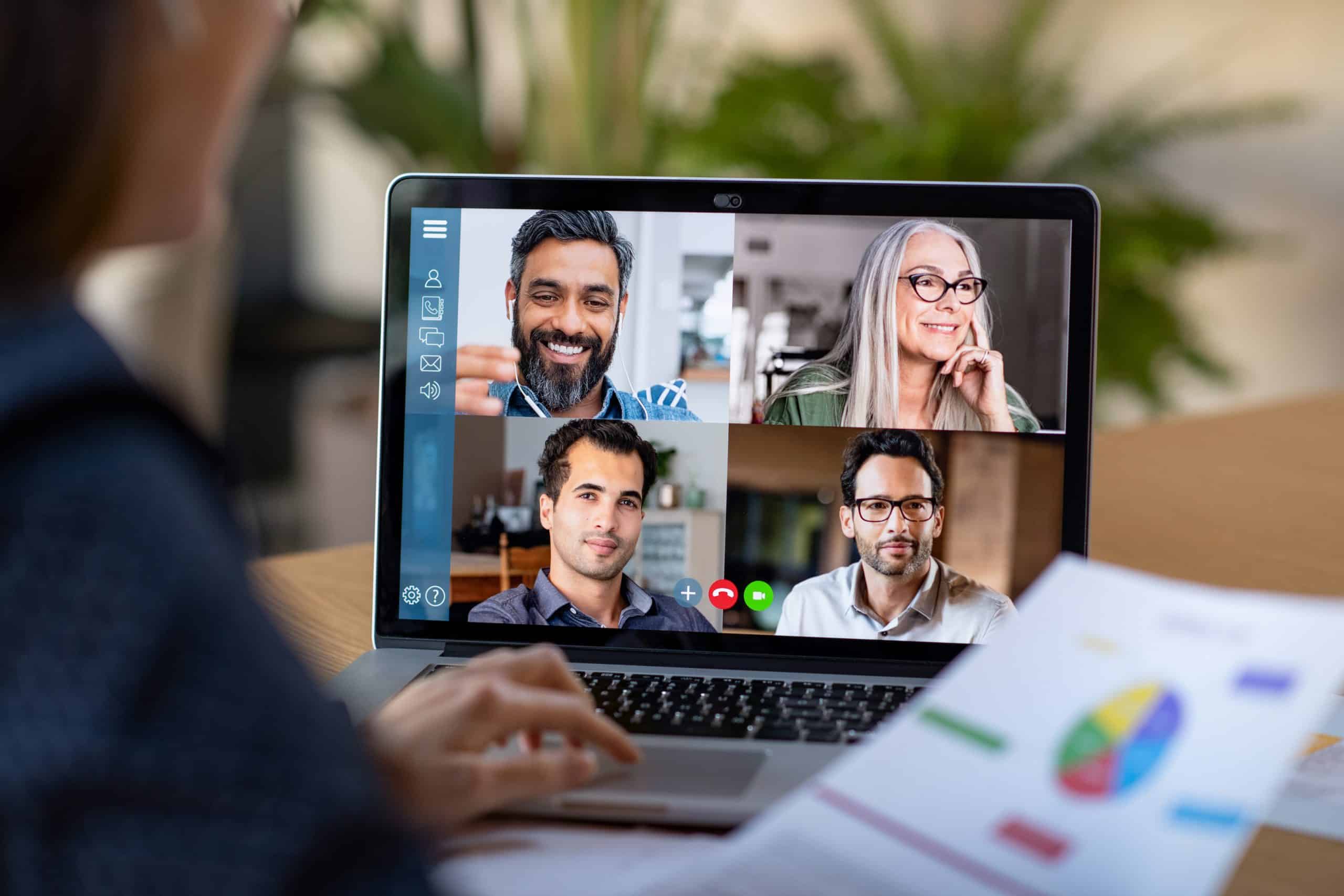How Can You Set Up a Professional Home Video Conferencing Area?

In the era of remote work, the importance of a professional home video conferencing area cannot be overstated. Whether you’re connecting with colleagues for a team meeting, presenting a critical pitch to clients, or conducting a seminar, video conferencing is now a vital part of our professional lives. The quality of your video, audio, lighting, and overall setup can significantly affect your meetings’ effectiveness and portray your professionalism. In this article, we’ll guide you on setting up an efficient and professional home video conferencing area with optimum quality and the best equipment.
Choosing the Right Room for Your Video Conference
Choosing the right room for your home video conferencing setup is the first step in creating a professional environment for your meetings. The room should be neat, quiet, and well-lit to provide the best video and audio quality.
In parallel : How to Design a High-Tech Kitchen with Integrated Appliances for a Seamless Look?
Also, consider the size of the room. A small room might make the conference feel cramped, while a large room could create an echo. If possible, choose a medium-sized room with carpeting to absorb sound and prevent echo.
The room should also have a neutral background. Avoid rooms with distracting wall arts or bright colors that will take attention away from you during meetings. If you can’t find a room with a suitable background, consider using a backdrop or a green screen.
Have you seen this : What’s the Best Way to Incorporate a Luxurious Steam Shower into a Small Bathroom?
Lastly, ensure the room has good lighting. Natural light is ideal, but if that’s not possible, install bright, soft lighting that doesn’t cast shadows on your face.
Selecting the Best Video Conferencing Equipment
Once you’ve chosen the right room, the next step is to select the best video conferencing equipment. This includes a high-quality camera, audio devices, and a display monitor.
For the camera, consider purchasing a high-definition (HD) webcam. HD webcams provide clear, high-quality images that enhance your meeting experience. They also come with features such as auto-focus and light correction for optimal video quality.
When it comes to audio, opt for a noise-cancelling microphone and headphones. These devices will ensure your voice is clear and audible, eliminating background noise.
Finally, a good display monitor is key for a good video conferencing setup. Choose a monitor with a high resolution for a clear display. An adjustable monitor stand will also be beneficial to set the display at eye level, ensuring a more natural conversation.
Optimizing Your Internet Connection
Another crucial aspect of setting up a professional home video conferencing area is ensuring a stable and fast internet connection. Video conferencing platforms like Zoom require a robust internet connection for quality video and audio.
For the best results, use a wired internet connection instead of Wi-Fi. Wired connections are typically faster and more stable, reducing the chances of lagging or disconnecting during important meetings.
If a wired connection isn’t possible, make sure your Wi-Fi signal is strong and reliable. You can do this by placing your router in a central location, away from devices that can interfere with its signal.
Arranging Lighting and Background for Video Conferencing
Good lighting and a professional background are key to presenting yourself well in video conferences. Ideally, the main source of light should be in front of you, illuminating your face without causing glare or shadows. Avoid having a window or bright light source behind you, as it can cause backlighting and make you appear as a silhouette.
As for the background, it should be neat and professional. Uncluttered, neutral-colored walls work best. If your room doesn’t have an appropriate background, you can use a portable backdrop or a virtual background feature available on most video conferencing platforms.
Adapting Your Video Conferencing Setup to Various Meeting Types
Lastly, remember to adapt your video conferencing setup to suit different types of meetings. For example, if you’re hosting a large meeting, you might need a wide-angle camera to encompass multiple participants. On the other hand, an intimate one-on-one meeting can be perfectly captured with a standard webcam.
Always test your setup before the meeting to ensure the video, audio, and lighting are optimal. This will not only give you confidence but also leave a positive impression on your meeting participants.
While setting up a professional home video conferencing area requires some effort and investment, it’s well worth it. It enhances your communication, boosts your professional image, and ensures you’re ready to handle any meeting, conference, or presentation from the comfort of your home.
Putting Together an Effective Room Setup
Achieving an effective room setup is crucial for conducting successful video conferences. This requires not just the right equipment but also a keen eye for detail. By paying attention to the small things, you can greatly improve the quality of your video conferences and leave a lasting impression on your clients and colleagues.
Start with the desk or table you’ll use. It should be large enough to accommodate your equipment, yet not so large as to make your area look cluttered. The height should allow you to sit comfortably with your feet flat on the floor, and your arms resting at a 90-degree angle when using your keyboard.
Next, consider the chair you’ll use. It should provide good back support and be adjustable to allow you to sit at the correct height. A good chair can help prevent back pain and fatigue during long video meetings.
The positioning of your equipment is also crucial. Your camera should be at eye level to create a more personal and engaging interaction. This can be achieved by placing your camera on a stable, adjustable stand.
Your keyboard and mouse should be within easy reach and positioned to prevent strain. If you’re using a laptop, consider using an external keyboard and mouse for better ergonomics.
Ensure the area around you is tidy and free from distractions. A clean, clutter-free environment helps you focus and gives a professional image during your video calls.
Lastly, use cable management solutions to keep your workspace neat and organized. This not only improves the aesthetics of your home office but also prevents accidental tripping or disconnection of your devices.
Leveraging Conferencing Software and Tools
The final step in setting up a professional home video conferencing area is leveraging the right conferencing software and tools. There are several options available, including popular ones like Zoom, Microsoft Teams, and Google Meet. These platforms offer a range of features to facilitate virtual meetings, such as screen sharing, virtual backgrounds, and real-time captions.
Choose a platform that is widely used in your industry and meets your specific needs. For instance, if you’re often presenting slides or documents, choose a software with robust screen sharing capabilities.
In addition to the main conferencing software, consider using additional tools to enhance your video meetings. This could include productivity tools for collaborative work, plugins for improved audio and video quality, or scheduling tools for efficient meeting planning.
Always ensure your software and tools are up to date. Regular updates not only provide new features but also fix bugs and improve security.
Lastly, practice using your conferencing software and tools before your meetings. Familiarize yourself with the interface and learn to use the features effectively. This will help you look more professional and avoid technical glitches during your video conferences.
Conclusion
In the age of remote work and virtual meetings, a professional home video conferencing setup is no longer a luxury but a necessity. By choosing the right room, selecting the best equipment, optimizing your internet connection, arranging the lighting and background, and adapting your setup to various meeting types, you can create a professional environment for your video conferences.
Moreover, an effective room setup and the use of conferencing software and tools can enhance the quality of your video meetings and boost your professional image. Remember, the key to successful video conferencing lies in preparation and attention to detail.
So invest time and effort in setting up your professional home video conferencing area. It’s an investment that will pay off in better communication, increased productivity, and a more professional image. Whether you’re a freelancer, an entrepreneur, or a corporate worker, a professional home video conferencing setup will help you thrive in today’s digital world. So get started today, and experience the difference it can make in your professional life.
